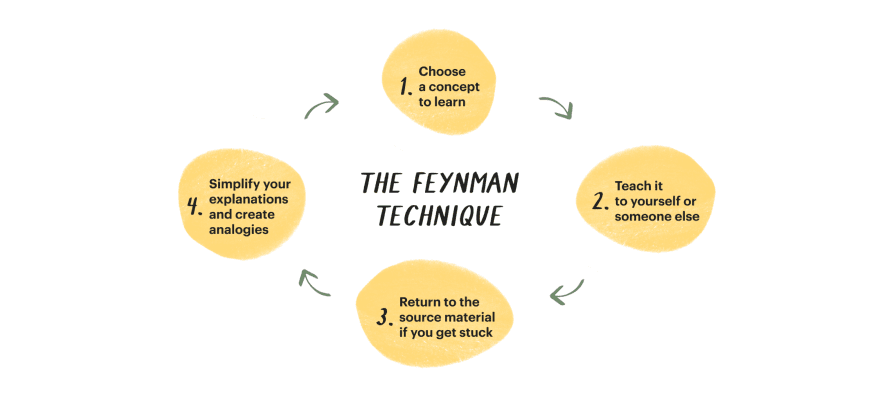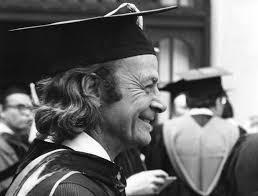Feynman technique
There are four simple steps to the Feynman Technique , which I'll explain below:
- Choose a Concept
- Teach it to a Toddler
- Identify Gaps and Go Back to The Source Material
- Review and Simplify (optional)
***
If you're not learning you're standing still. So what's the best way to learn new subjects and identify gaps in our existing knowledge?
There are two types of knowledge and most of us focus on the wrong one. The first type of knowledge focuses on knowing the name of something. The second focuses on knowing something. These are not the same thing. The famous Nobel winning physicist Richard Feynman understood the difference between knowing something and knowing the name of something and it's one of the most important reasons for his success. In fact, he created a formula for learning that ensured he understood something better than everyone else.
A lot of people tend to use complicated vocabulary and jargon to mask when they don't understand something. The problem is we only fool ourselves because we don't know that we don't understand. In addition, using jargon conceals our misunderstanding from those around us.
When you write out an idea from start to finish in simple language that a child can understand (tip: use only the most common words), you force yourself to understand the concept at a deeper level and simplify relationships and connections between ideas. If you struggle, you have a clear understanding of where you have some gaps. That tension is good -it heralds an opportunity to learn.
In step one, you will inevitably encounter gaps in your knowledge where you're forgetting something important, are not able to explain it, or simply have trouble connecting an important concept.
This is invaluable feedback because you've discovered the edge of your knowledge. Competence is knowing the limit of your abilities, and you've just identified one!
This is where the learning starts. Now you know where you got stuck, go back to the source material and re-learn it until you can explain it in basic terms.
Identifying the boundaries of your understanding also limits the mistakes you're liable to make and increases your chance of success when applying knowledge.
Now you have a set of hand-crafted notes. Review them to make sure you didn't mistakenly borrow any of the jargon from the source material. Organize them into a simple story that flows.
Read them out loud. If the explanation isn't simple or sounds confusing that's a good indication that your understanding in that area still needs some work.
2
2 reads
The idea is part of this collection:
Learn more about writing with this collection
How to create customer-centric strategies
The importance of empathy in customer success
The impact of customer success on business growth
Related collections
Similar ideas to Feynman technique
Four Steps Of The Feynman Technique
The technique is based on the method Richard Feynman originally used.
There are four steps to the Feynman Technique:
- Pretend to teach a concept you want to learn about to a child.
- Identify gaps in your explanation. Fill the gaps by g...
4 Steps to the Feynman Technique.
- Teach it to a child. Write down what you know about the subject in plain language. This forces you to understand the concept at a deeper level and simplify relationships and connections between ideas.
- Review the gaps in your knowledge that you uncovered in step 1. Ident...
The Feynman Technique
Richard Feynman understood the difference between:
- knowing something and
- knowing the name of something
He created a formula for learning that ensured he understood something better than everyone else.
Read & Learn
20x Faster
without
deepstash
with
deepstash
with
deepstash
Personalized microlearning
—
100+ Learning Journeys
—
Access to 200,000+ ideas
—
Access to the mobile app
—
Unlimited idea saving
—
—
Unlimited history
—
—
Unlimited listening to ideas
—
—
Downloading & offline access
—
—
Supercharge your mind with one idea per day
Enter your email and spend 1 minute every day to learn something new.
I agree to receive email updates

